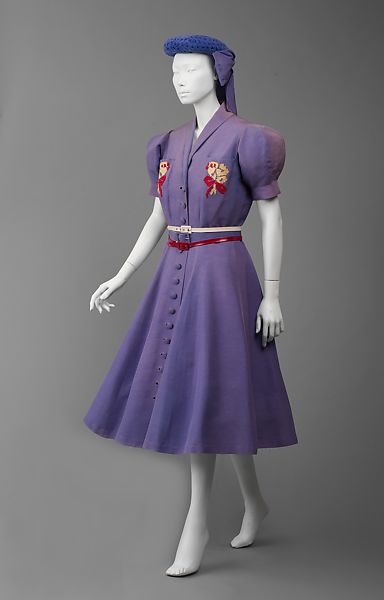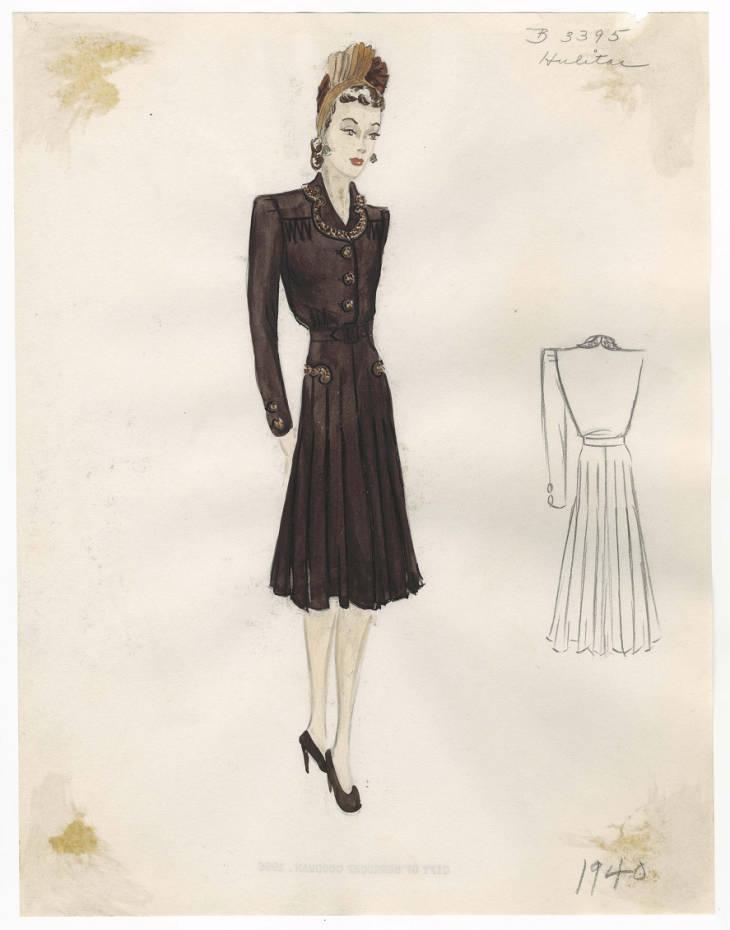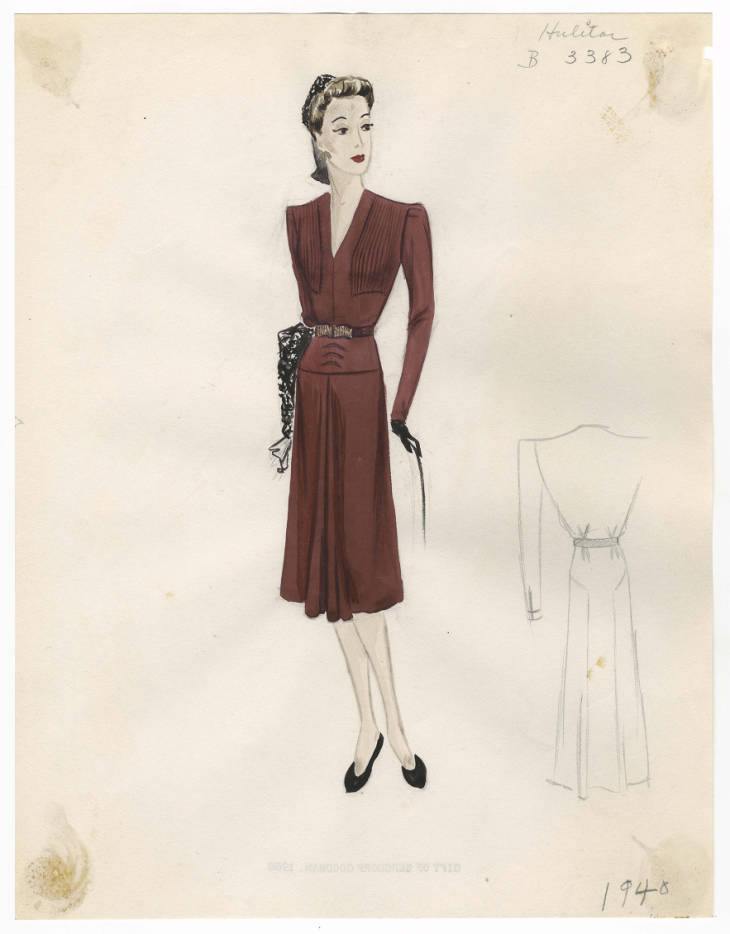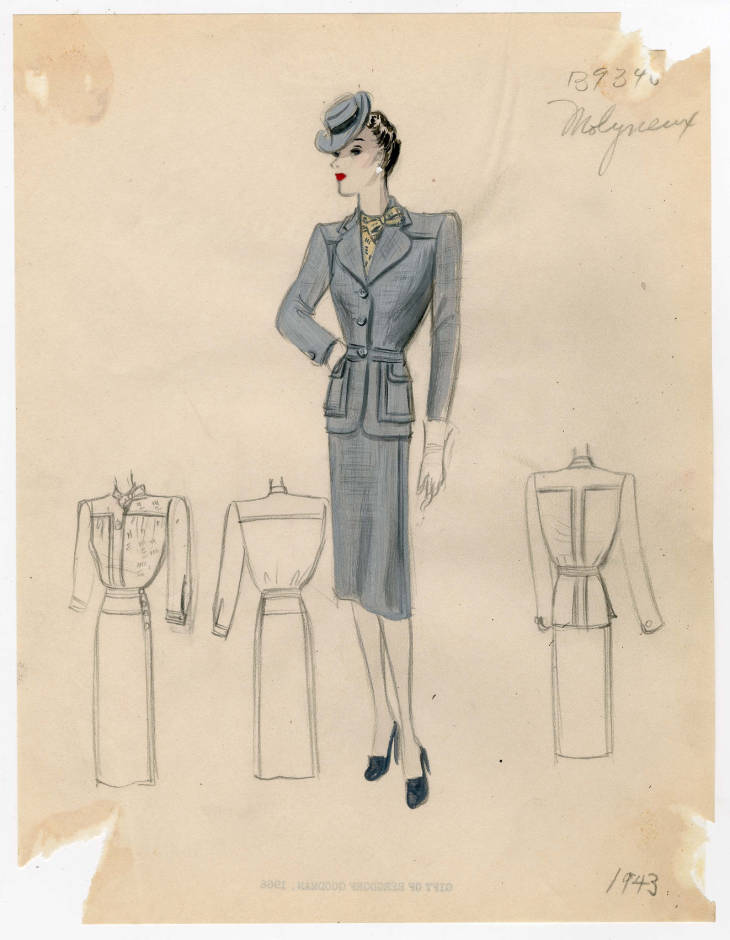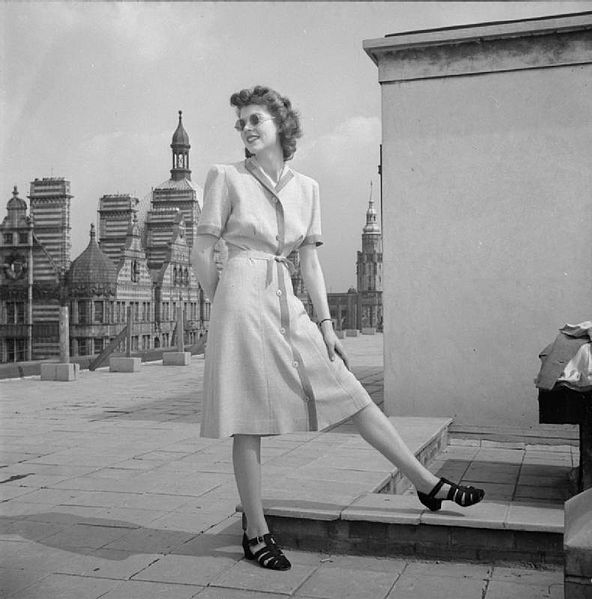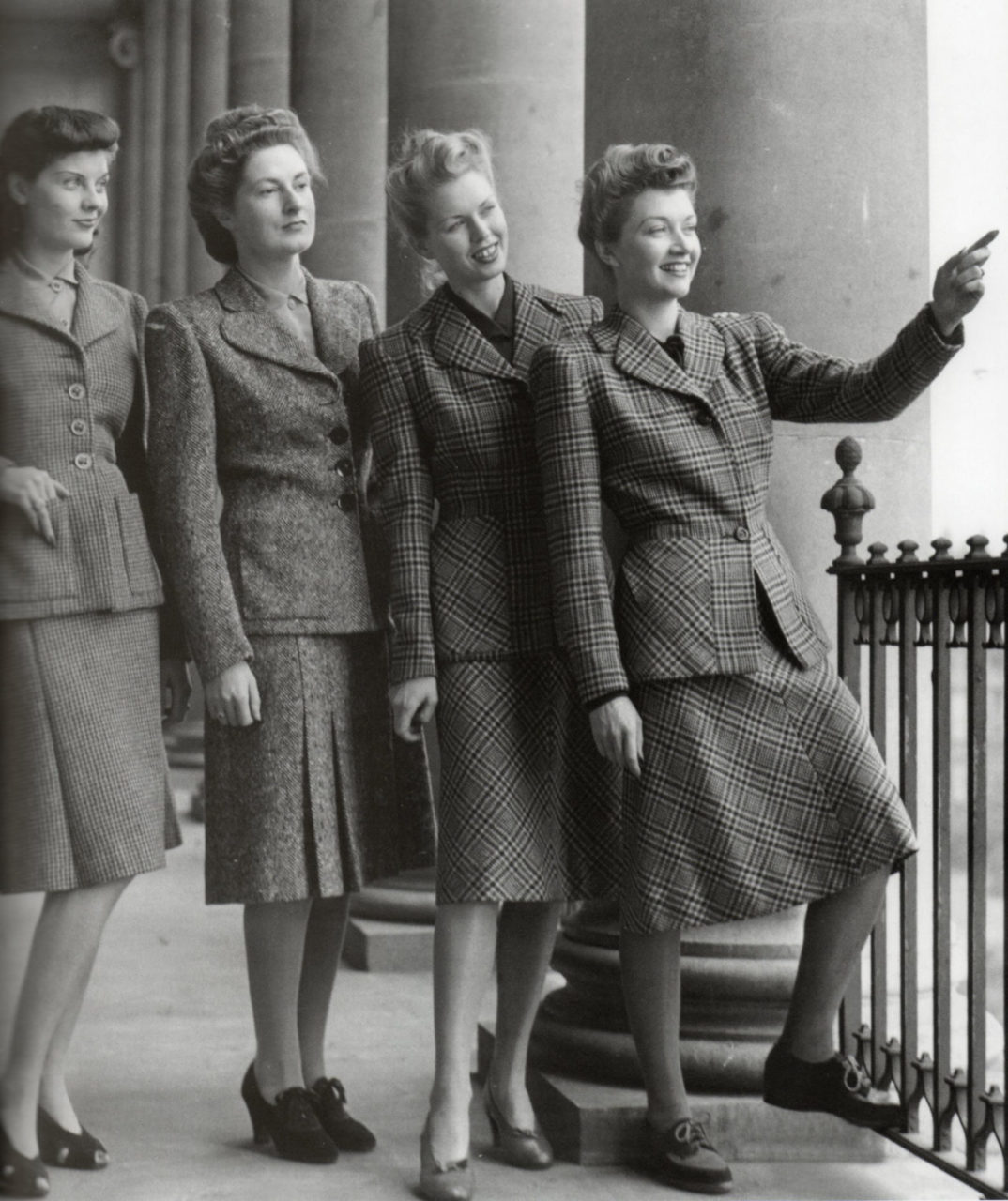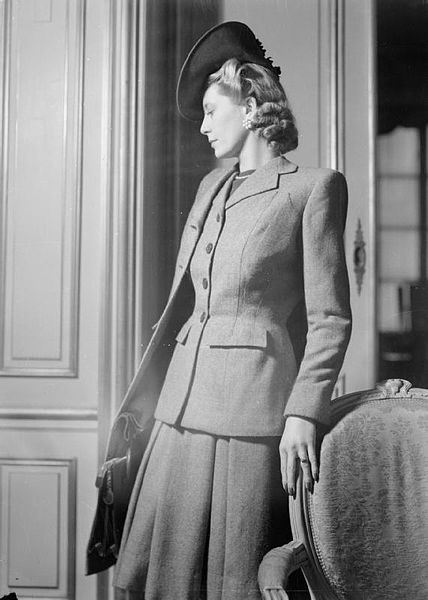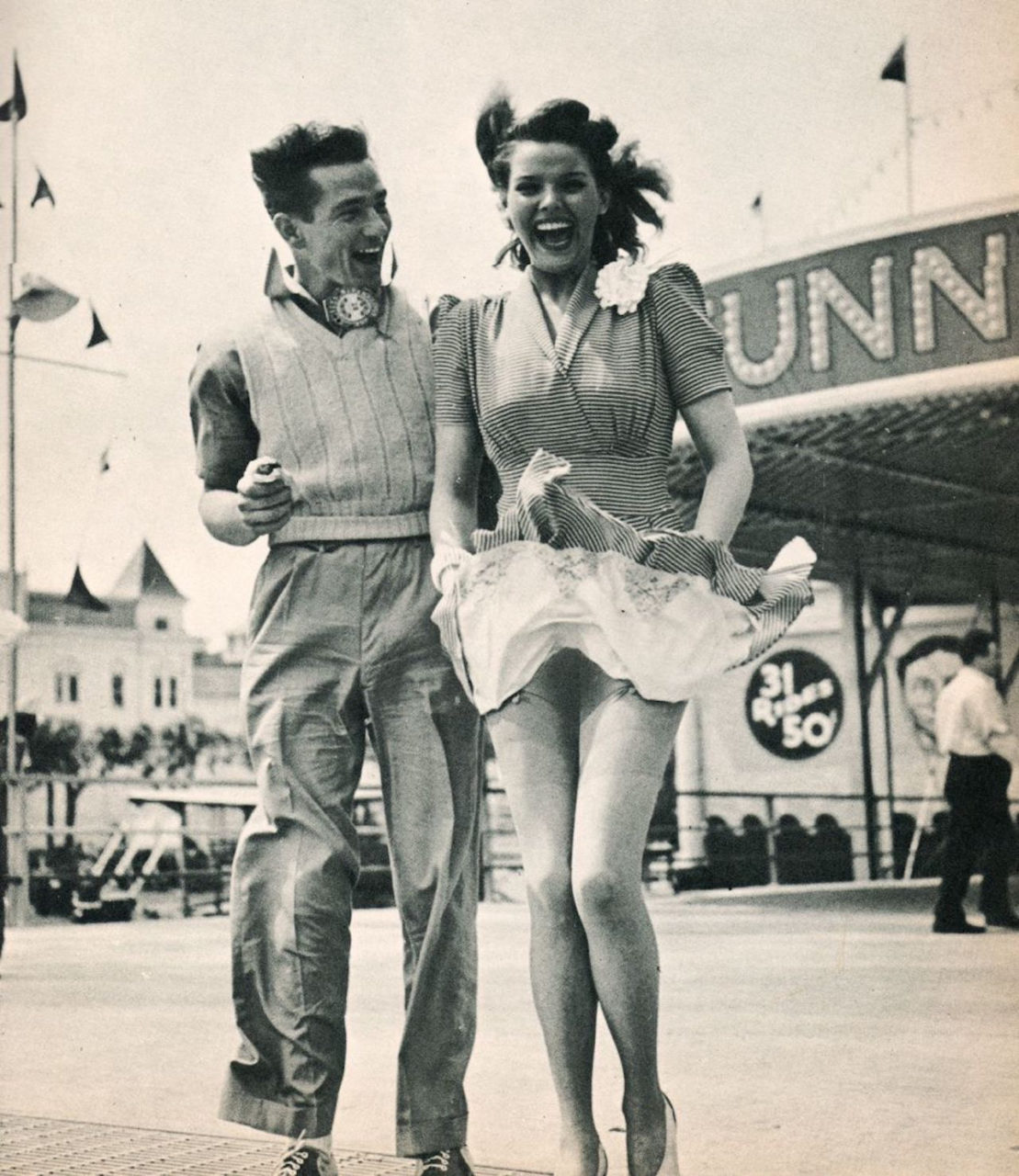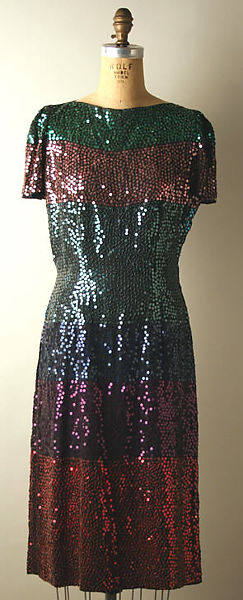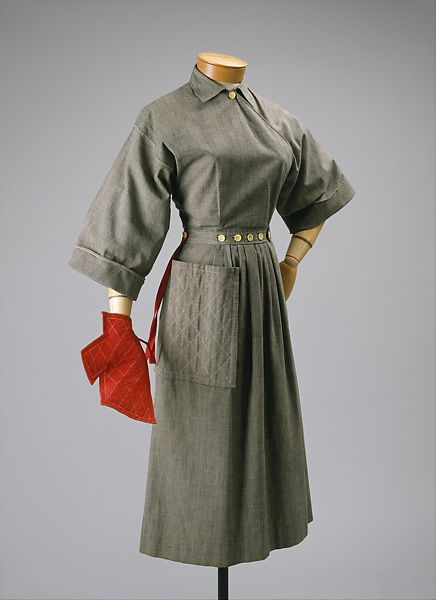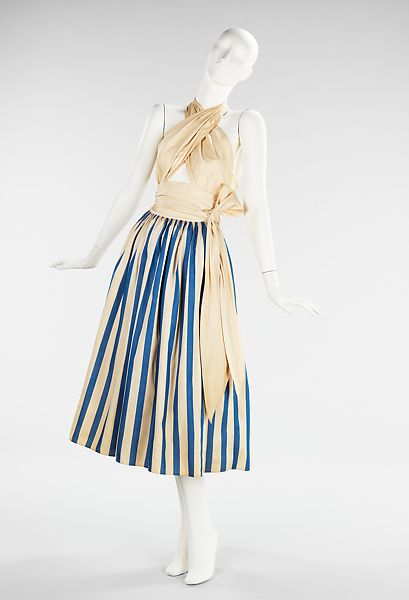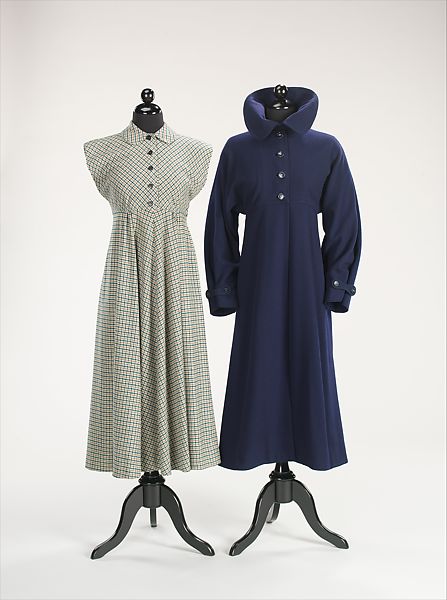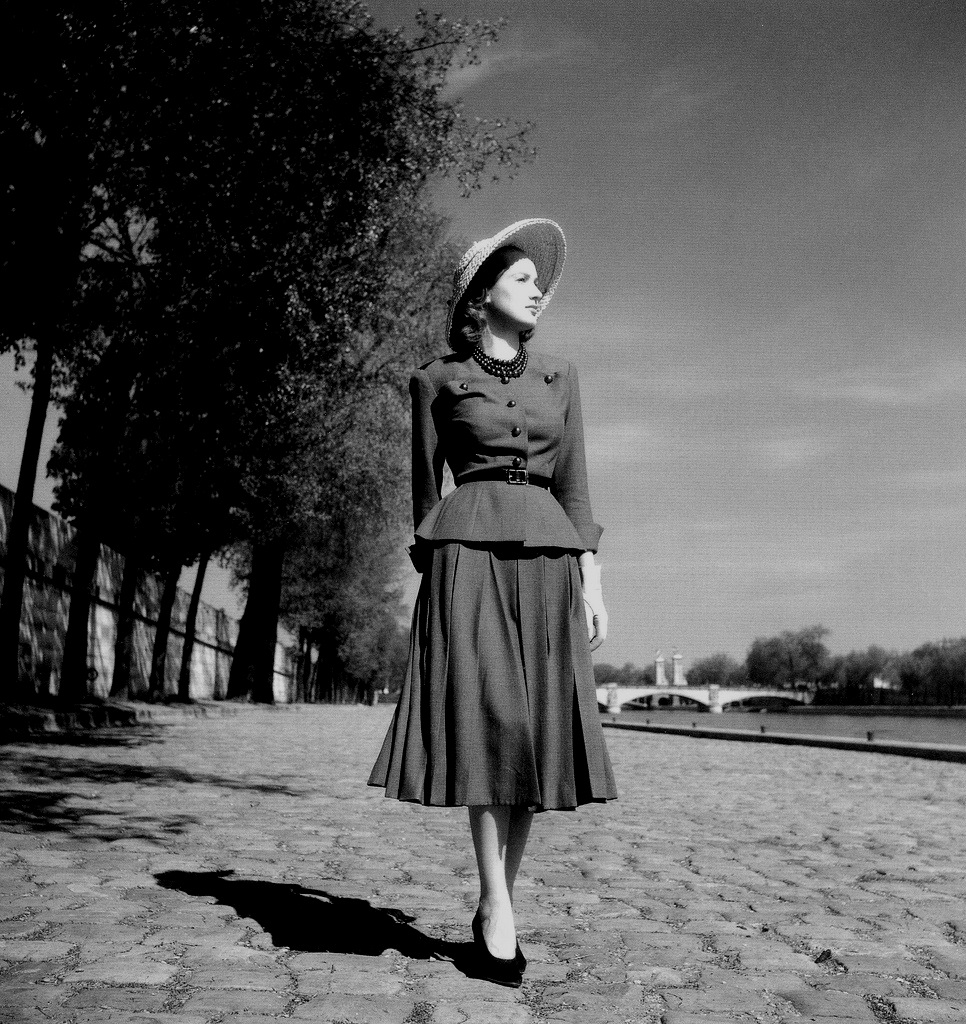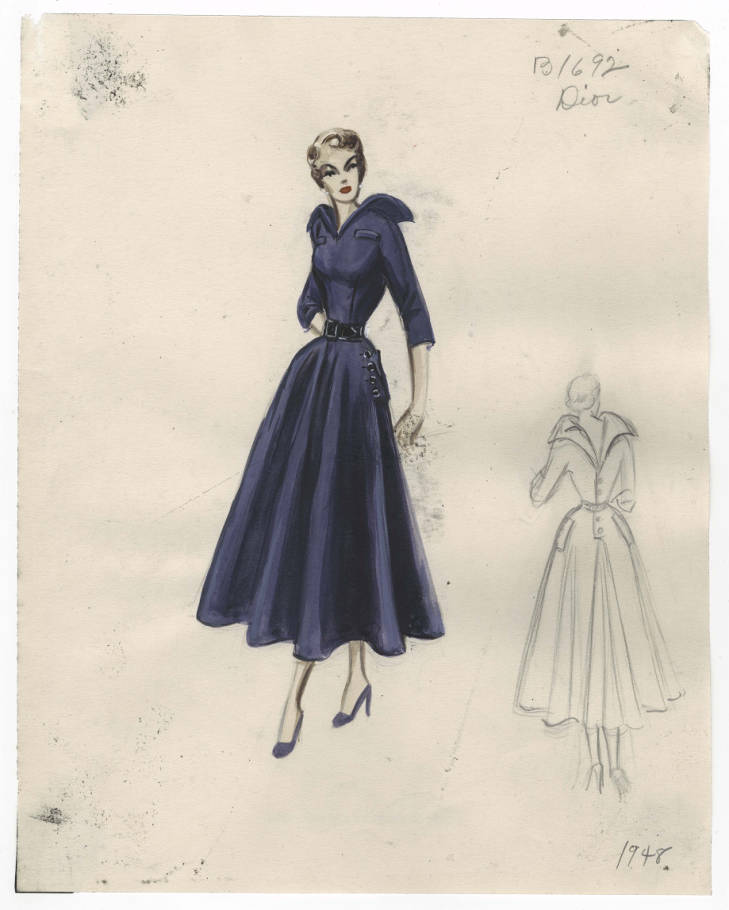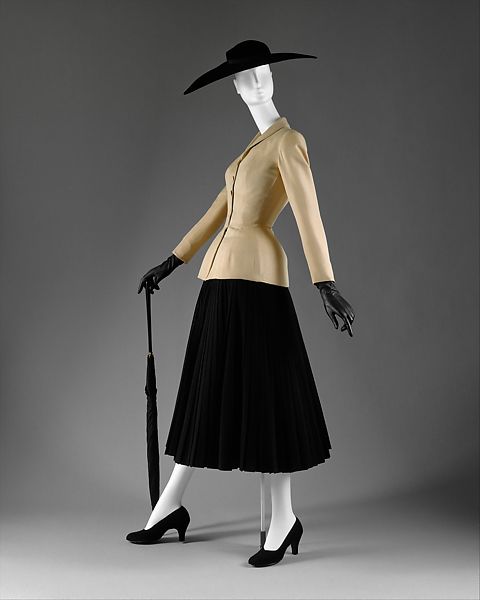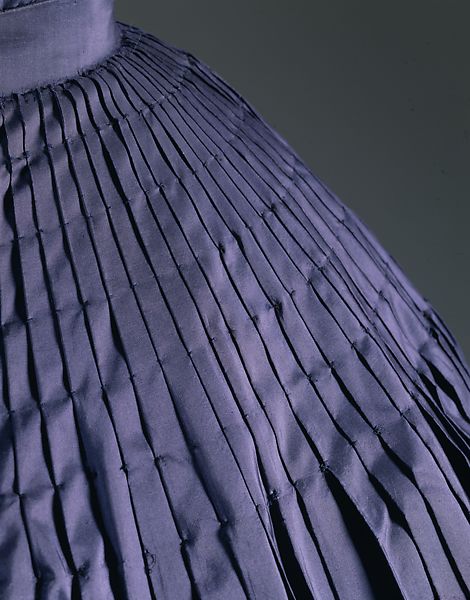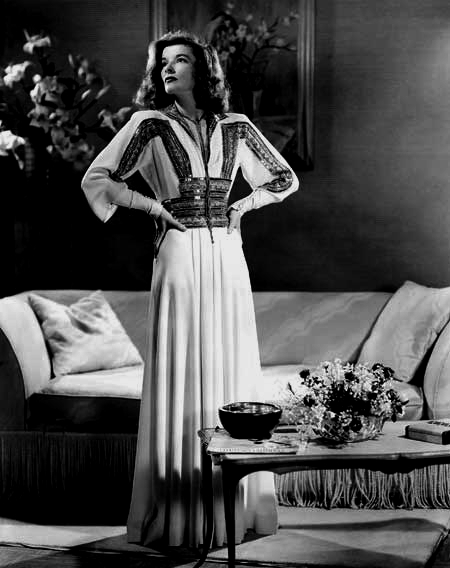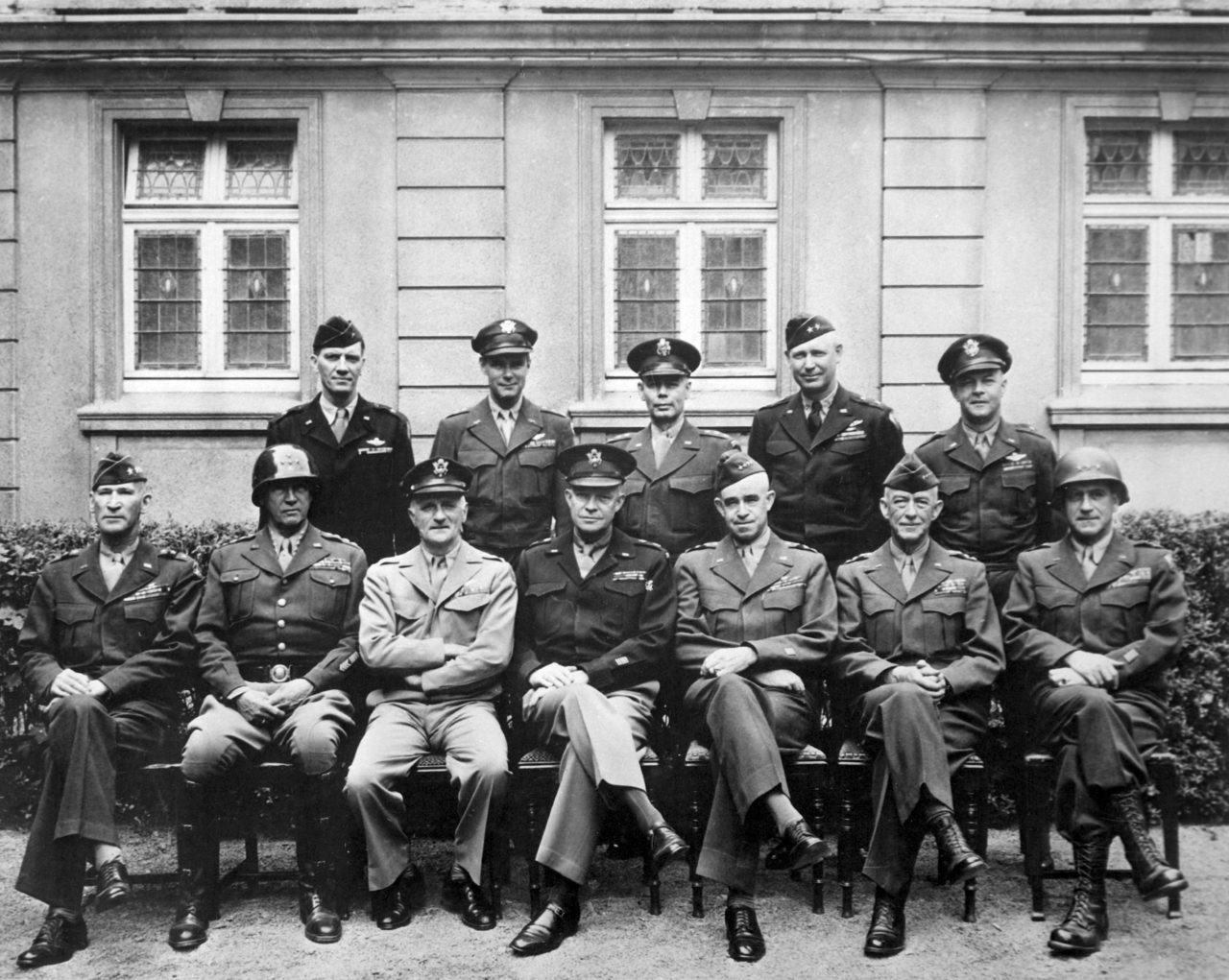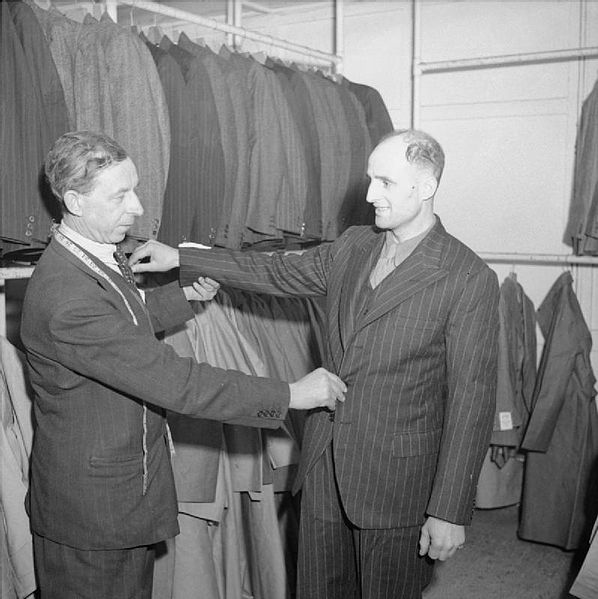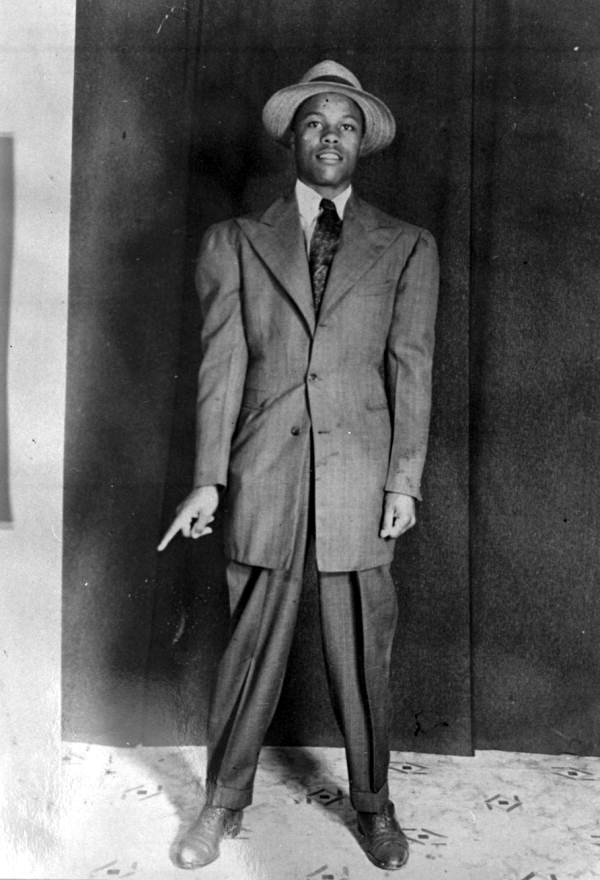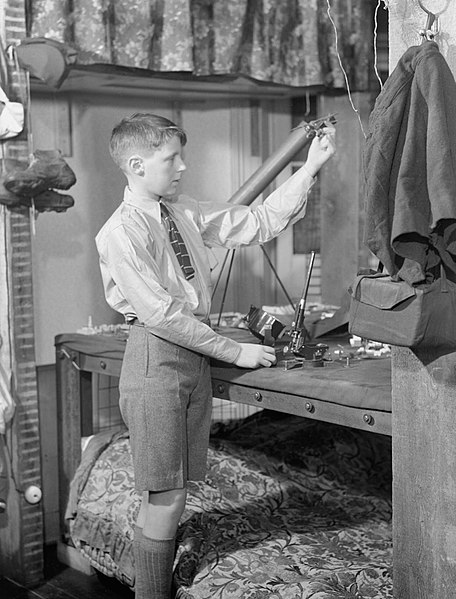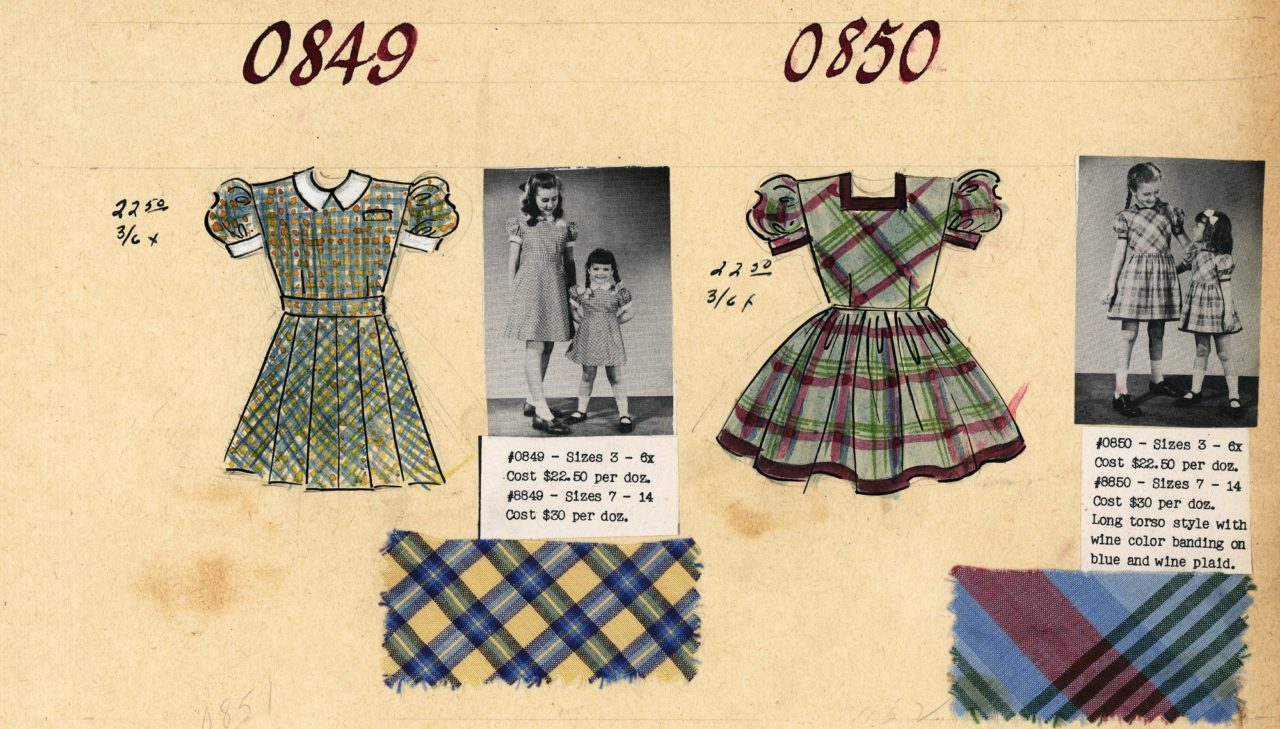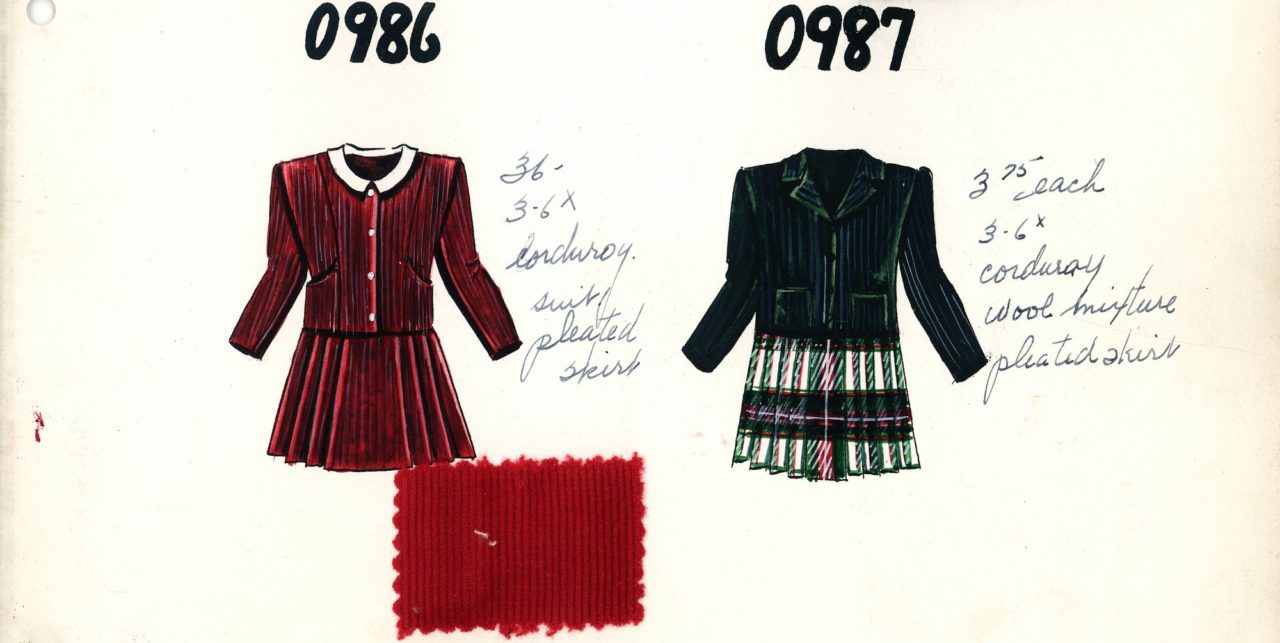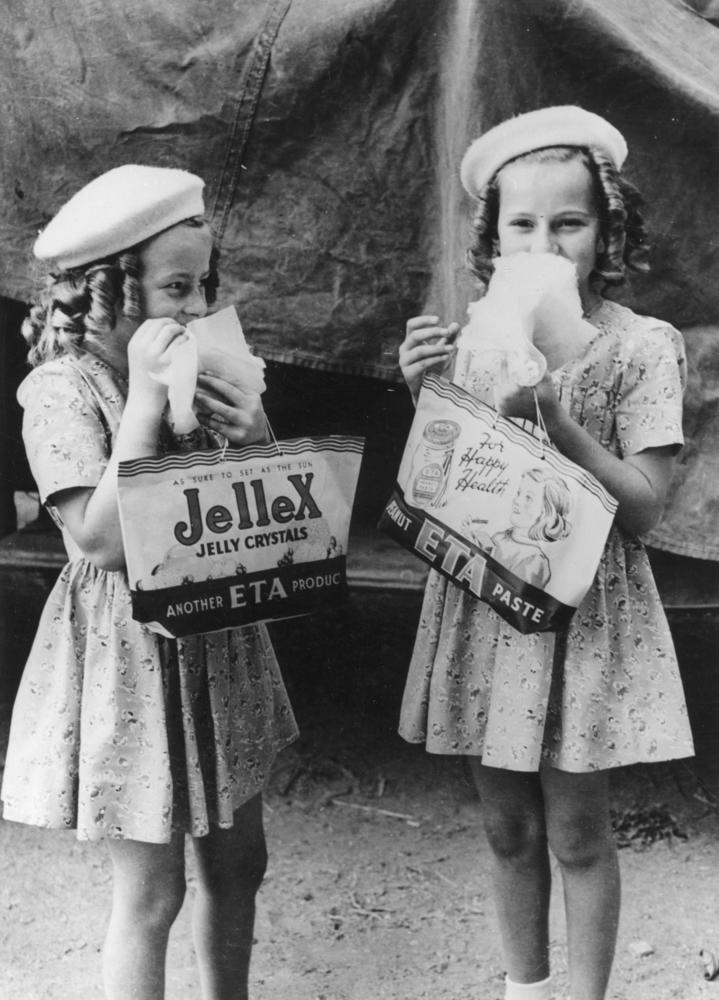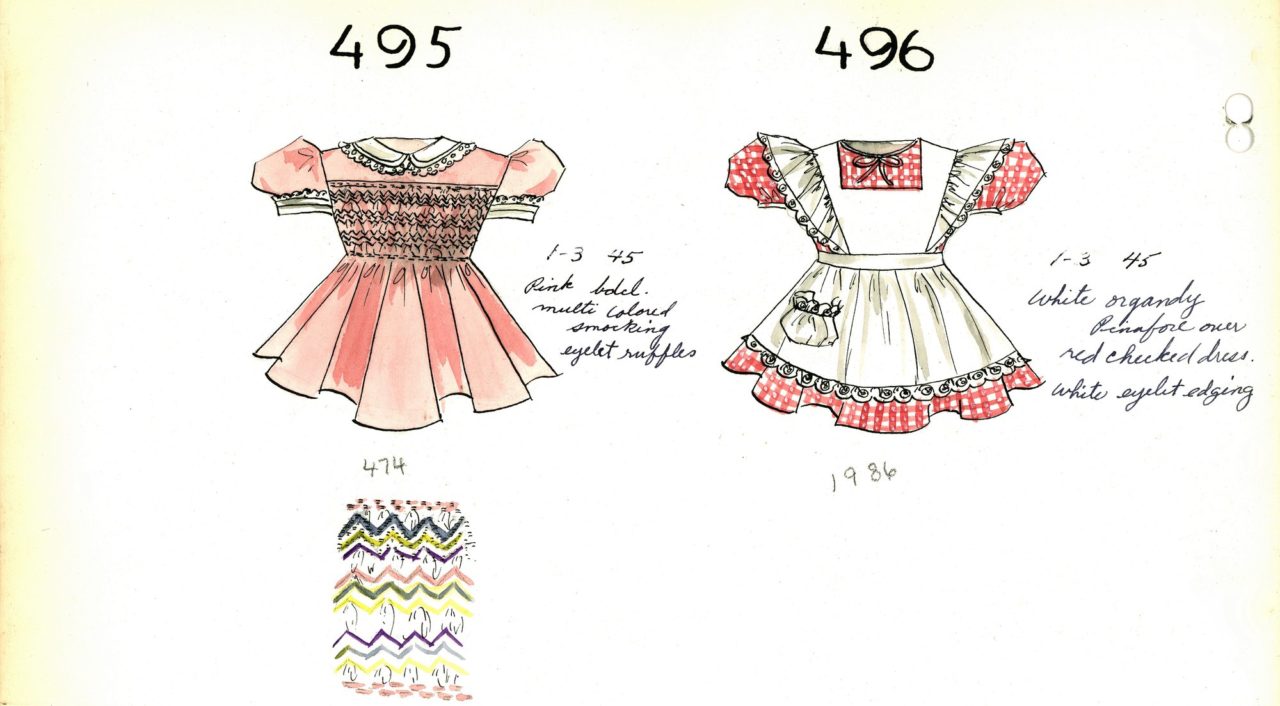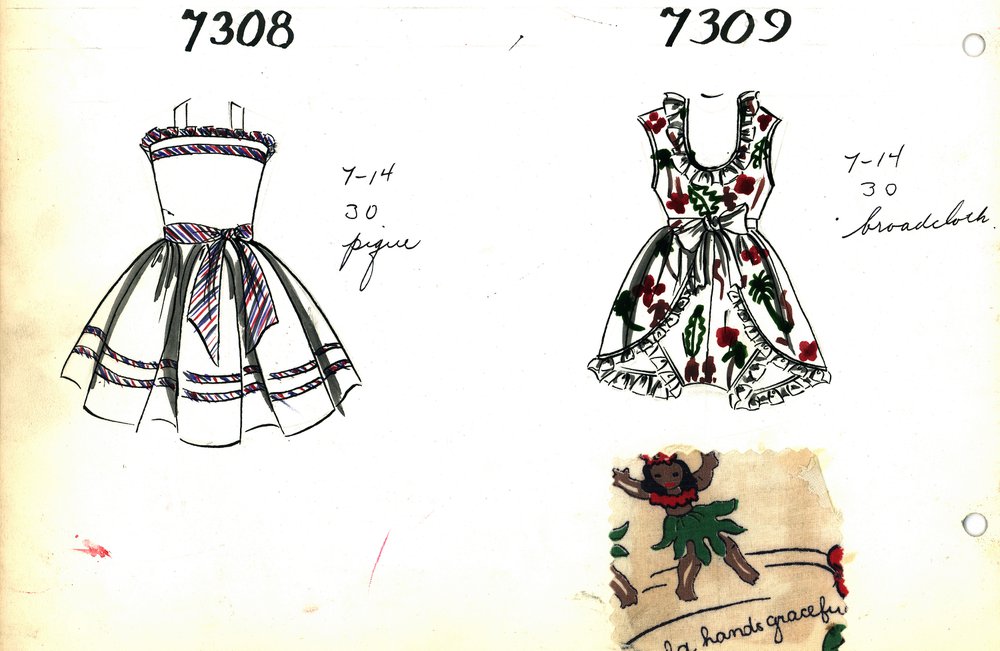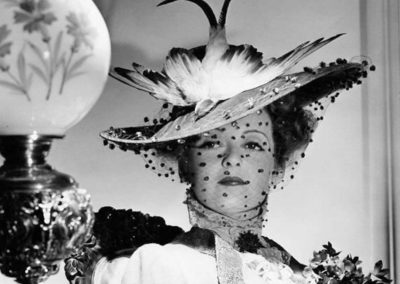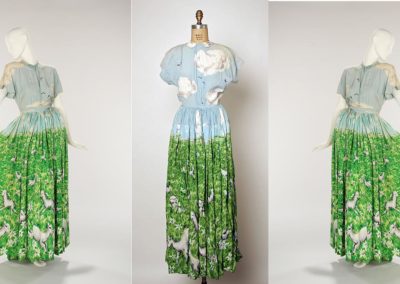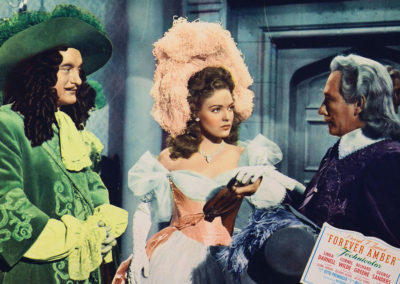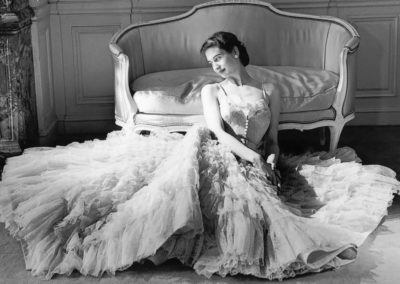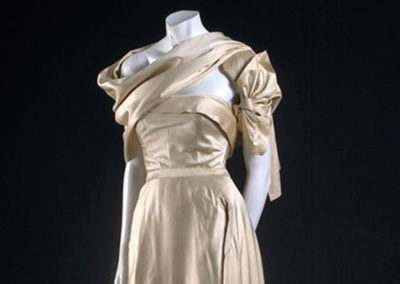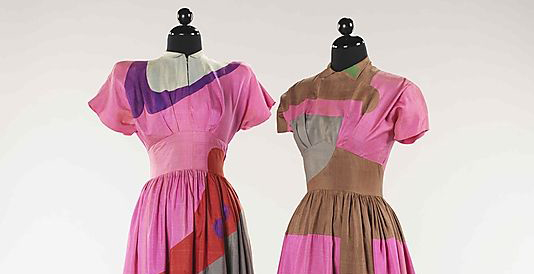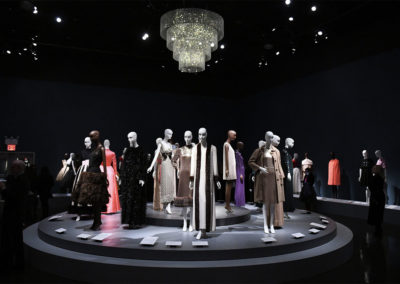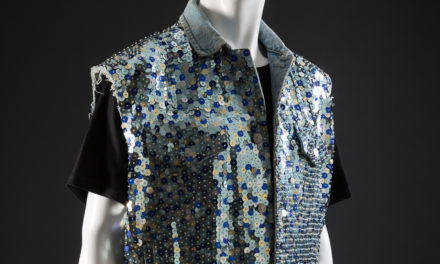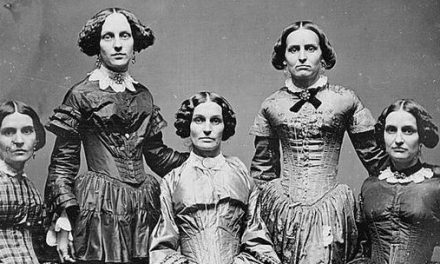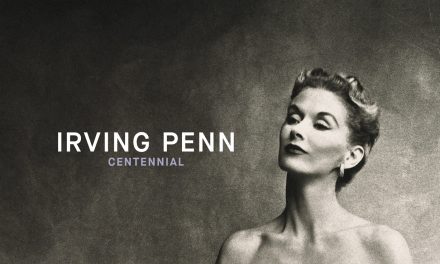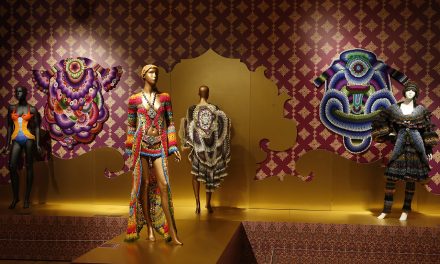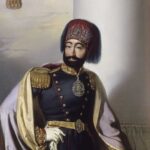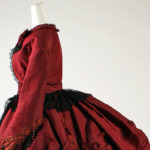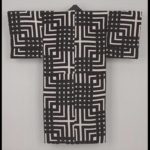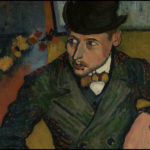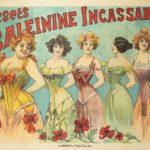OVERVIEW
With the first half of the 1940s dominated by World War II, fashion stalled. Both men and women were often seen in their uniforms during the war and, if they were not, their clothing styles were dictated by rationing and Utility clothing. After the war, Christian Dior launched the New Look in Paris, returning women’s fashion to an overtly feminine silhouette, while men, women, and children’s clothing all began to lean towards the sporty, casual American Look.
Womenswear
By the dawn of the 1940s, France had long been established as the center of women’s fashion design. However, just six months into 1940, German forces occupied Paris, an occupation that would last until late 1944. While some designers left Paris at the start of the occupation, many stayed and continued to design (Ewing 141). Because France was cut off from the US and the UK, these designs were not seen outside of France and diverged drastically from what other countries were wearing. This difference can be seen as early as 1940 as the Bergdorf Goodman sketches by American designer Philip Hulitar (Fig. 2 and 3) show a much sleeker silhouette than the full-skirted wedding ensemble by French designer Jeanne Lanvin (Fig. 1).
Fig. 1 - Jeanne Lanvin (French, 1867–1946). Wedding Ensemble, 1940. Linen, silk, cotton. New York: The Metropolitan Museum of Art, 1978.582.199a–e. Gift of Marvin B. Patterson (Mrs. Jefferson Patterson), 1978. Source: The Metropolitan Museum of Art
Fig. 2 - Philip Hulitar (American, 1905-1992). Bergdorf Goodman sketches : Hulitar 1940-1942, 1940. Sketch. The Metropolitan Museum of Art: Bergdorf Goodman sketches, 1929-1952. Source: The Met Digital Collections
Fig. 3 - Philip Hulitar (American, 1905-1992). Bergdorf Goodman sketches : Hulitar 1940-1942, 1940. Sketch. New York: Bergdorf Goodman sketches, 1929-1952. Source: The Met Digital Collections
Fig. 4 - Edward Molyneux (British, 1891-1974). Bergdorf Goodman sketches : Molyneux 1940-1949, 1943. Sketch. New York: Bergdorf Goodman sketches, 1929-1952. Source: The Met Digital Collections
Outside of France, fashion during the war was dominated by rationing. Utility clothing and uniforms were the most ubiquitous forms of “fashion” during the war. Utility clothing could be bought with ration coupons. For example, the British Utility dress seen in figure 5 cost 7 coupons. Both Utility dresses and uniforms adopted similar design elements: “The look was simple but stylish, with good proportion and line. It incorporated padded shoulders, a nipped-in waist, and hems to just below the knee,” writes James Laver in Costume and Fashion: A Concise History (253). By 1943, even non-Utility clothing, like the Molyneux design for Bergdorf Goodman (Fig. 4), followed these same lines. The suits were quite boxy and had rounded collars, as seen in the variety of suits in figure 6. Tweeds and plaids, popular in the 1930s, continued to be used in Utility clothing, as did bright colors and patterns which helped offset the – literally – utilitarian pieces.
Furthering the fashionability of Utility garments in the UK was the Incorporated Society of London Fashion Designers or Inc. Soc. for short. Designers such as Norman Hartnell, Hardy Amies, and Edward Molyneux submitted designs for the scheme. Fashion historian Jayne Shrimpton writes in Fashion in the 1940s, “The [Utility Clothing] initiative might never have succeeded had the government not taken the inspired decision to involve leading London couturiers in the design of Utility clothing” (31). So, while the look of Utility clothing may have been simple, it had the cachet of being designed by leading London designers and the Utility suit by Hardy Amies in figure 7 demonstrates how these suits were styled with aplomb.
Fig. 5 - Atrima. Utility Clothes - Fashion Restrictions in Wartime Britain, 1943. London: Ministry of Information Second World War Official Collection. Ministry of Information Photo Division Photographer. Source: Wikimedia
Fig. 6 - Designer unknown. Utility Fashions, 1942. Laura Loveday. Source: Flickr
Fig. 7 - Hardy Amies (British, 1909-2003). London Fashion Designers- the work of Members of the Incorporated Society of London Fashion Designers, London, England, UK, 1945, 1945. London: Ministry of Information Second World War Official Collection. Ministry of Information Photo Division Photographer. Source: Wikimedia
Fig. 8 - Photographer unknown. Couple at amusement park, 1940s. Source: Pinterest
Fig. 9 - Norman Norell (American, 1900–1972). Subway Costume, Early 1940s. Wool, sequins. New York: The Metropolitan Museum of Art, 1973.330.1a, b. Gift of Mrs. Theodore B. Lindsey, 1973. Source: The Metropolitan Museum of Art
In the US, clothes rationing never became quite as severe as it was in the UK. This, along with the lack of French designs coming out of Paris, allowed American design to thrive during the war, especially ready-to-wear (Fig. 8). Two designers emerged on the American scene developing simple, casual styles that proved trendy and popular: Norman Norell and Claire McCardell. Norell’s high-quality designs filled the void created by the absence of designs coming out of occupied Paris. By using unrationed sequins on his sheath dresses starting in 1942, he added sparkle to the otherwise bleak atmosphere brought by the war (Fig. 9). McCardell’s designs were sporty, casual, and practical, much like the dress worn by the woman in figure 8. She deftly navigated rationing restrictions and produced designs that went on to be classics. When wool and silk were limited in 1942, she looked to denim, seersucker, and jersey to create classic dresses and separates.
In 1940, McCardell introduced her “Popover” dress (Fig. 10). Though the wrap dress was originally introduced as a $7 Utility garment, it quickly became a staple in her arsenal. Seamwork’s Betsy Blodgett writes of the dress,
“McCardell came up with a denim wrap-front dress. It was simple, chic, and even came with an oven mitt… A version of the Popover wrap dress was included in collections for the rest of her career” (Deconstructing Claire McCardell).
McCardell’s easy to wear, fun, comfortable clothing, like the 1945 striped sundress (Fig. 11) and the roomy dress and coat ensemble from 1947 (Fig. 12) continued to be successful into the 1950s. Thanks to the wide appeal of McCardell and Norell, along with the work of London designers such as Hartnell and Amies, both the US and Britain hoped to continue leading fashion on the world stage after the war ended. While their international fashion profiles had increased, liberated Paris was eager to retake its status as the fashion capital. Thanks to Christian Dior, it certainly did.
Fig. 10 - Claire McCardell (American, 1905–1958). Pop-over, 1942. Cotton. New York: The Metropolitan Museum of Art, C.I.45.71.2a, b. Gift of Claire McCardell, 1945. Source: The Metropolitan Museum of Art
Fig. 11 - Claire McCardell (American, 1905-1958). Sundress, 1945. Cotton. New York: Brooklyn Museum Costume Collection at The Metropolitan Museum of Art, 2009.300.230. Gift of the Brooklyn Museum, 2009; Gift of Claire McCardell, 1956. Source: The Metropolitan Museum of Art
Fig. 12 - Claire McCardell (American, 1905-1958). Ensemble, 1947. Wool. New York: Brooklyn Museum Costume Collection at The Metropolitan Museum of Art, 2009.300.233a–e. Gift of the Brooklyn Museum, 2009; Gift of Claire McCardell, 1956. Source: The Metropolitan Museum of Art
The war ended in 1945, but life did not immediately go back to normal and that included fashion. Clothes rationing stayed in place in Britain until 1949 and there were still shortages of material in both the UK and the US. However, the smart simplicity of Utility clothing quickly lost its appeal with the launch in February 1947 of Dior’s defining post-war style, dubbed “The New Look” by fashion editor Carmel Snow (Figs. 13-14).
Officially named the “Corolle” line, the New Look was characterized by rounded shoulders, a cinched-in waist, and – significantly – a long, full skirt. The line’s most famous style, the “Bar Suit” (Fig. 15), featured a white, tailored jacket and full, pleated black skirt. While it was referred to as “new,” the designs actually evolved from pre-war styles. Laver writes of the moniker,
“The New Look was in fact not new at all, but simply an exaggeration of late 1930s and Occupation styles, yet it was the very antithesis of the clothing produced in both the UK and the United States during the war.” (256)
To those who had become used to the simple lines of Utility clothing and using every scrap of material they could get their hands on, the full skirt of the New Look was jarring. The “Chérie” dress (Fig. 16) boasted tight pleating, adding to the large amount of fabric required to create the look. With some styles using up to fifteen yards of fabric, it was viewed by some as wasteful. Still, other women feared its blatant femininity would set back the progress women had made working outside the home during the war. Despite these controversies, the New Look silhouette continued to be popular into the later 1940s (Fig. 14) and was the predominant silhouette in women’s fashion by 1949 and stayed that way well into the 1950s.
Fig. 13 - Christian Dior (French, 1905–1957). Dior's Corolle (New Look) line, 1947. Photo by Willy Maywald. Source: Flickr
Fig. 14 - Christian Dior (French, 1905-1957). Bergdorf Goodman sketches : Dior 1947-1949, 1948. Sketch. New York: Bergdorf Goodman sketches, 1929-1952. Source: The Met Digital Collections
Fig. 15 - Christian Dior (French, 1905-1957). Bar, Spring/Summer 1947. Silk. New York: The Metropolitan Museum of Art, C.I.58.34.30. Gift of Mrs. John Chambers Hughes, 1958. Source: The Metropolitan Museum of Art
Fig. 16 - Christian Dior (French, 1905-1957). Chérie, Spring/Summer 1947. Silk. New York: The Metropolitan Museum of Art, C.I.48.13a, b. Gift of Christian Dior, 1948. Source: The Metropolitan Museum of Art
Fashion Icon: Katharine Hepburn
Fig. 17 - Photographer unknown. Katharine Hepburn, 1940s. Source: Flickr
Hepburn’s high-waisted slacks and button-down shirt off-screen look bordered on a uniform and epitomized the emerging “American look” in the 1940s. Cultural historian Amy Henderson writes for Smithsonian Magazine, “She wore clothes that allowed her to move freely; offscreen, she favored a sportswear look that reflected her innate athleticism” (How Katharine Hepburn Became a Fashion Icon). While some women opted for trousers in the 1940s, especially while working for the war effort, it was still unusual to see a woman in trousers in such a visible way. Yet her svelte image helped to spread the sporty, American style to which Claire McCardell also contributed.
Menswear
While women’s Utility clothing was designed by established designers like Claire McCardell in the US and Norman Hartnell in the UK, men’s Utility clothing was marked by its pared-down look rather than its fashion credentials. Shrimpton writes,
“Men’s clothing was also subject to strict guidelines: single-breasted jackets replaced double-breasted styles, while lapel size and the number of pockets were restricted; similarly, less material was to be used in the tailoring of trousers, and turn-ups were eliminated. These austerity restrictions were applied to all clothes produced for the domestic market, not only to the Utility ranges.” (29)
Instead of buying new suits during the war, many men relied on suits they already owned (like the 1940 suit in figure 18) when they weren’t in their uniforms.
Fig. 18 - F. L. Dunne & Company (American). Suit, 1940. Wool. New York: Brooklyn Museum Costume Collection at The Metropolitan Museum of Art, 2009.300.880a–c. Gift of the Brooklyn Museum, 2009; Gift of Mrs. Albert Ogden in memory of Sheldon Stewart, 1964. Source: The Metropolitan Museum of Art
Fig. 19 - Army (American). Senior American commanders of the European theater of World War II, ca. 1945. National Archives and Records Administration. Office of War Information. Source: Wikimedia
Fig. 20 - Menzies Frazer (Sergeant) (British). Demobilisation of British Service Personnel. Sergeant H Minnall from Chiswick, London, is fitted with his civilian suit at the demobilisation centre at Olympia, London., 1945-1975. War Office Second World War Official Collection. Source: Wikimedia
Fig. 21 - Photographer unknown. Rayfield McGhee in a zoot suit: Tallahassee, Florida, ca. 1942. Photonegative; (5 x 4 in). Tallahassee, Florida: State Library and Archives of Florida. Source: Flickr
Fig. 22 - William P. Gottlieb (American, 1917-). Portrait of Jonah Jones and Cab Calloway, Columbia studio, New York, N.Y., ca. Mar. 1947, ca. 1947. Washington, DC: Library of Congress: William P. Gottlieb Collection (DLC) 99-401005, LC-GLB23- 0469. Source: Flickr
Though many men stuck to uniforms (Fig. 19) or suits they already owned, a controversial men’s style rose to prominence in 1943. The “zoot suit” evolved from the popular “drape” suits that were seen on the dance floor in Harlem in the 1930s. By the early 1940s, it was a style worn predominately by minority working-class men. The suit consisted of an oversized jacket and voluminous trousers that were tapered at the ankle to avoid tripping. The look was completed with a wide tie.
Worn in a period of rationing, the excess fabric caused civil unrest in Los Angeles in June 1943. Alice Gregory of Smithsonian Magazine writes, “For over a week, white U.S. soldiers and sailors traversed Los Angeles beating up allegedly ‘unpatriotic’ Mexican-American men, identifiable by their conspicuously voluminous attire.” Zoot suits were an early streetwear style created by men buying suits several sizes too large and tailoring them. This offered a great range of styling with less baggy options like Rayfield McGhee’s (Fig. 21) or the exaggerated look as seen on Jonah Jones and Cab Calloway (Fig. 22). Though zoot suits became notorious in 1943, the trend continued into the 1950s until it ultimately faded away.
The zoot suit may have been an exaggerated style, but many elements were present in fashionable suits in the years after the war. Wide shoulders, high-waists, wide-legs, and wide ties were all popular in men’s suits in the postwar years. In Britain, military men were issued demobilisation, or “demob,” suits to help their transition back into civilian life (Fig. 20). However, these followed earlier lines of the 1930s and were unpopular. By the end of the 1940s, young men in Britain were looking to Savile Row’s highly tailored “Edwardian” styles.
Post-war, an American approach to dressing inspired a more casual, sporting style for both men and women which saw popularity in both the US and Europe. Servicemen who returned to mainland US from Asia and the Pacific islands brought with them a trend for brightly colored Hawaiian shirts. Though they had gained popularity in Hawaii in the 1930s, the trend spread in the postwar years and into the 1950s as the relaxed American style was widely adopted.
CHILDREN’S WEAR
With such restrictions, second-hand and homemade clothing was especially popular for children during the war. Hand-knitted garments like sweaters and cardigans were easy and popular items for young children. Young boys wore shorts or trousers with a blazer or jacket for more formal occasions or sweaters for casual wear.
Fig. 23 - Ministry of Information Photo Division Photographer Joysmith Eric? (British). Utility Underwear- Clothing Restrictions on the British Home Front, 1943. A three-quarter length view of a 12-year-old boy playing with a toy aircraft as he models a printed cotton shirt (costing 6/- and 4 coupons) and union flannel shorts (costing 10/3 and 3 coupons)., 1943. London: Ministry of Information Second World War Official Collection. Source: Wikimedia
Fig. 24 - Joseph Love (1891?-1971). Girl's Dresses, 1942. Gouache, ink; (7.5 x 11 in). Joseph Love, Inc. Collection. Source: SPARC Digital
Fig. 25 - Joseph Love (1891?-1971). Girl's Skirt Set, 1944. Gouache, ink; (7.5 x 11 in). Joseph Love, Inc. Collection. Source: SPARC Digital
Fig. 26 - Photographer unknown. Two young girls enjoying themselves at the RNA Show, Brisbane, 1946, 1946. State Library of Queensland. Source: Flickr
Along with knitted pieces, cotton dresses were popular for young girls (Fig. 26). Peter pan collars, puffed sleeves, and full skirts were present in most designs. Smocking on the bodice was especially prevalent. Where girls’ dresses in the 1930s had high-waists, most styles in the forties had defined, natural waists (Fig. 24). Older girls wore pleated skirts with jackets (Fig. 25) and their clothes began to resemble women’s fashion more closely as they got older. While girls primarily wore dresses and skirts, very young girls sometimes wore overalls. In the later forties, pinafores, like the one in figure 27, were worn over dresses and throughout the 1940s, plaids, gingham, florals, and bright colors were popular choices, worn with contrasting white collars. Like menswear, children’s clothes saw an influence from Hawaiian shirts, like the playsuit in figure 28.
Fig. 27 - Joseph Love (1891?-1971). Girl's Dresses, 1949. Gouache, ink; (7.5 x 11 in). Joseph Love, Inc. Collection. Source: SPARC Digital
Fig. 28 - Joseph Love (1891?-1971). Girl's Sundress and Playsuits, 1949. Gouache, ink; (7.5 x 11 in). Joseph Love, Inc. Collection. Source: SPARC Digital
References:
- Blodgett, Betsy. “Deconstructing Claire McCardell.” Seamwork. Accessed April 30, 2019. https://www.seamwork.com/issues/2017/06/deconstructing-claire-mccardell.
- Biography. “Katharine Hepburn.” Last modified April 17, 2019. Accessed April 30, 2019. https://www.biography.com/actor/katharine-hepburn.
- CFDA. “In Memoriam Norman Norell.” Accessed April 30, 2019. https://cfda.com/members/profile/norman-norell.
- Depauw, Karen. “Katharine Hepburn: Dressing a Star.” WNPR, April 4, 2014. Accessed April 30, 2019. https://www.wnpr.org/post/katharine-hepburn-dressing-star.
- Depauw, Karen. “Katharine Hepburn: The Personal Wardrobe of a Star.” WNPR, May 2, 2014. Accessed April 30, 2019. https://www.wnpr.org/post/katharine-hepburn-personal-wardrobe-star.
- Evitts Dickinson, Elizabeth. “A Dress for Everyone.” The Washington Post Magazine, December 12, 2018. Accessed April 30, 2019. https://www.washingtonpost.com/news/magazine/wp/2018/12/12/feature/the-designer-who-radically-suggested-that-women-should-wear-whats-comfortable/?noredirect=on&utm_term=.fac124d545cb.
- Ewing, Elizabeth. History of 20th Century Fashion. 4th ed. London: B.T. Batsford Ltd, 2001. http://www.worldcat.org/oclc/456545252.
- Gregory, Alice. “A Brief History of the Zoot Suit.” Smithsonian Magazine, April 2016. Accessed April 30, 2019. https://www.smithsonianmag.com/arts-culture/brief-history-zoot-suit-180958507/.
- Henderson, Amy. “How Katharine Hepburn Became a Fashion Icon.” Smithsonian Magazine, May 12, 2015. Accessed April 30, 2019. https://www.smithsonianmag.com/smithsonian-institution/how-katharine-hepburn-became-fashion-icon-180955228/.
- Laver, James, Amy De La Haye and Andrew Tucker. Costume and Fashion: A Concise History.5th ed. New York: Thames & Hudson, 2012. http://www.worldcat.org/oclc/966352776.
- The Met. “Sundress, 1945.” Accessed April 30, 2019. https://www.metmuseum.org/art/collection/search/157111.
- The Met. “‘Pop-Over’, 1942.” Accessed April 30, 2019. https://www.metmuseum.org/art/collection/search/84029.
- Reference. “What Did Children Wear in the 1940s?” Accessed April 30, 2019. https://www.reference.com/beauty-fashion/did-children-wear-1940s-27ce6d51f8de985b.
- Riding, Daniel. “A Decade in Fashion: The 1940s.” Mens Fashion Magazine, May 21, 2013. Accessed April 30, 2019. http://www.mensfashionmagazine.com/a-decade-in-fashion-the-1940s.
- Shrimpton, Jayne. Fashion in the 1940s. Great Britain: Shire Publications, 2014. http://www.worldcat.org/oclc/1016574714.
- Summers, Julie. Fashion on the Ration: Style in the Second World War. London: Profile Books, 2015. http://www.worldcat.org/oclc/951672738.
- Victoria and Albert Museum. “History of Fashion 1900 – 1970.” Accessed April 30, 2019. http://www.vam.ac.uk/content/articles/h/history-of-fashion-1900-1970/.
- Victoria and Albert Museum. “Introduction to 20th Century Fashion.” Accessed April 30, 2019. http://www.vam.ac.uk/content/articles/i/introduction-to-20th-century-fashion/.
Historical Context
Wikipedia: 1940-1949
Events:
- 1940 – Ties become wider, with bolder patterns that range from art deco designs to tropical themes.
- 1942 – Rosie the Riveter is the star of a song that praises the American women working in factories. Her much-admired practical image has her dressed in blue coveralls, hair concealed underneath a red spotted scarf.
- 1943 – The Zoot Suit riots explode in Los Angeles, California. White sailors and marines take umbrage at young Mexican-Americans wearing suits that use large amounts of cloth.
- 1944 – Rationing becomes severe, and where economies in designs can be made, they are. Fabrics are cheap and cuts are sparing. A highly visible, military presence provides inspiration for designers during wartime. Civilian fashion seeks to emulate the uniform of servicemen and women.
- 1946 – The first Paris collections after the war foreshadow Dior’s New Look of 1947.
- 1947 – Princess Elizabeth of Great Britain marries Lieutenant Philip Mountbatten; her Norman Hartnell wedding dress is the main topic of conversation. Dior shows his first collection, immediately named “The New Look” by American fashion editor Carmel Snow, putting Paris back on the fashion map.
- 1948 – The 21st academy awards introduces an award for Best Costume Design.
- 1949 – Dorothy Shaver, president of Lord and Taylor department store, launches a line of casual but elegant sportswear dubbed “The American Look.” It is based on an earlier advertising campaign featuring designs by Claire McCardell, Clare Potter, and Bonnie Cashin.
Primary/Period Sources
Resources for Fashion History Research
To discover primary/period sources, explore the categories below.
Have a primary source to suggest? Or a newly digitized periodical/book to announce? Contact us!
Periodicals (Digitized)
Filmography
Secondary Sources
Also see the 20th-century overview page for more research sources... or browse our Zotero library.
Online
Books/Articles


